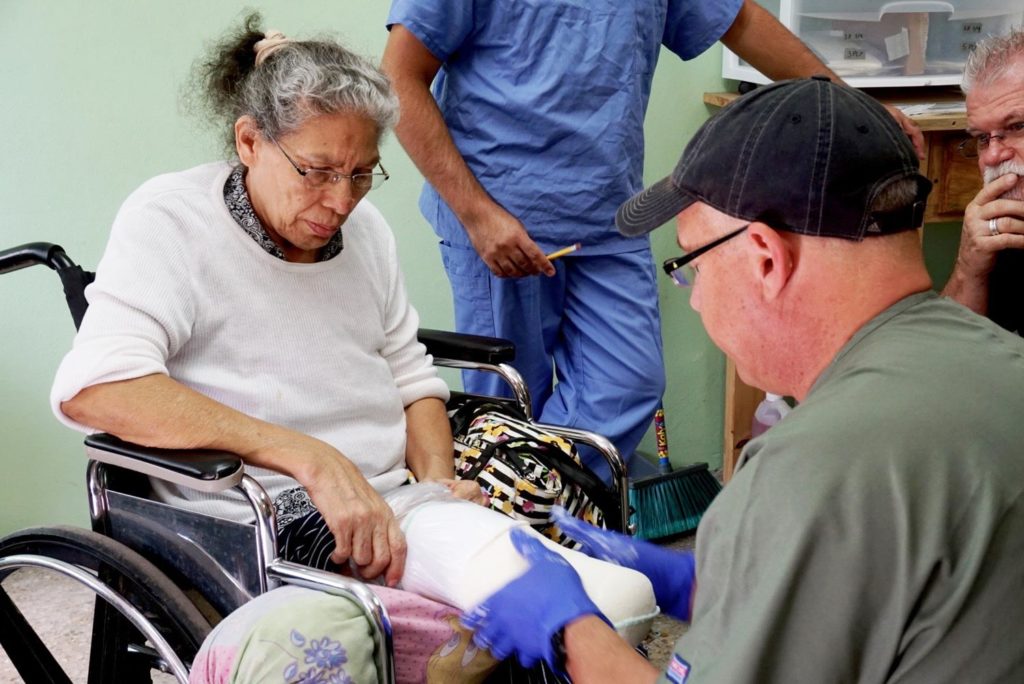In 2015, the World Health Organization (WHO) estimated that 80% of the 110 to 190 million people living with disabilities resided in developing nations. This includes more than 90 million children. They also estimated that, by 2010, over 25 million people worldwide would need prosthetic or orthotic devices to best function in society. Many of these patients lack access to prosthetic devices due to poverty, high prosthetic costs, and technician shortages. This study was a prospective cohort to take place in the time frame of 2014 to 2017.
The purpose of this study was to explore the hypothesis that a newly designed prosthetic leg, which costs less than $100 to manufacture, can assist persons with amputation by increasing their ability to gain employment—thus improving their quality of life. The specific criteria to accept the hypothesis is that greater than 50% of the participants with amputation who previously reported they were unable to work would be able to obtain a paying job as a direct result of using the prosthetic leg used in this research.
Materials and Methods This study was approved by the Edward Via College of Osteopathic Medicine (institutional review board number 2014–033). Persons with amputation older than the age of 17 years were seen at the James Moody Adams (JMA) Clinic at Baxter Institute in Tegucigalpa, Honduras. They received an approved consent form before participating in an investigational prosthetic leg research, and their medical history was collected. Each patient was assessed by a medical doctor and board-certified prosthetist for their ability to safely use the newly designed prosthesis called the Johnson prosthetic leg (JPL).
Persons with amputation received a prosthetic leg at no cost if found to be an appropriate candidate. Participants were followed by a physician, and a follow-up survey was administered after using the prosthetic device for a minimum of 6 months.
Results In this study, 306 persons with amputation were surveyed and 149 had transtibial amputations. Amputation due to diabetic infection was most prevalent with 118 (38%), whereas traumatic injuries accounted for 95 (31%). Participants received the JPL, and surveys were obtained after prosthetic use of 6 to 27 months. It was found that 64/66 participants (96.9%) reported wearing their prosthesis 6 to 7 days a week. Before this research, 38/66 participants (57.6%) had some ability to perform a paying job.
After having the ability to walk using the JPL, 59/66 patients (89%) reported an ability to obtain employment and provide financially for themselves and their families. This indicated that 21 (75%) of the 28 patients, who previously reported the inability to work, were able to obtain a job after receiving the JPL.
Conclusions The research hypothesis was accepted based on a criterion of greater than 50% of the participants who were previously unable to work had an increased ability to obtain employment after using the JPL. It was also noted that 65/66 patients (98.48%) self-reported improved self-esteem using a researcher-developed survey and would recommend this prosthetic device to other individuals with amputation. By greatly reducing financial barriers, the $100 JPL is a potential cost-effective solution to help persons with amputation living in developing nations acquire prosthetic legs. This successful pilot study provides justification for continuation and monitoring for any additional refinement. Further, it provides the basis for future studies, in additional countries, to determine efficacy to assist persons with amputation living in poverty.
Article by the American Academy of Orthotists and Prosthetists

